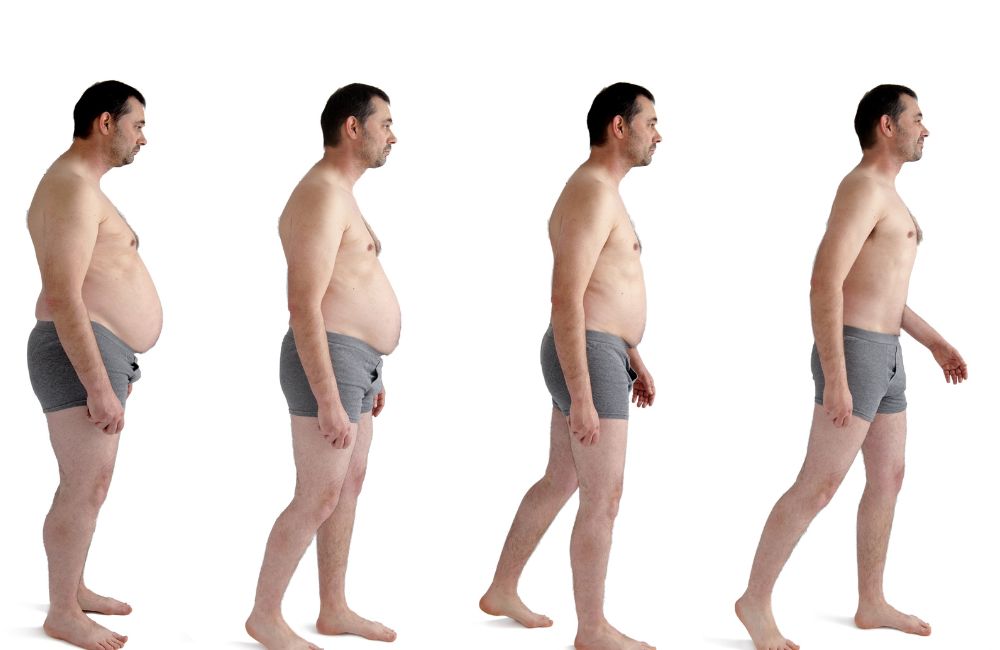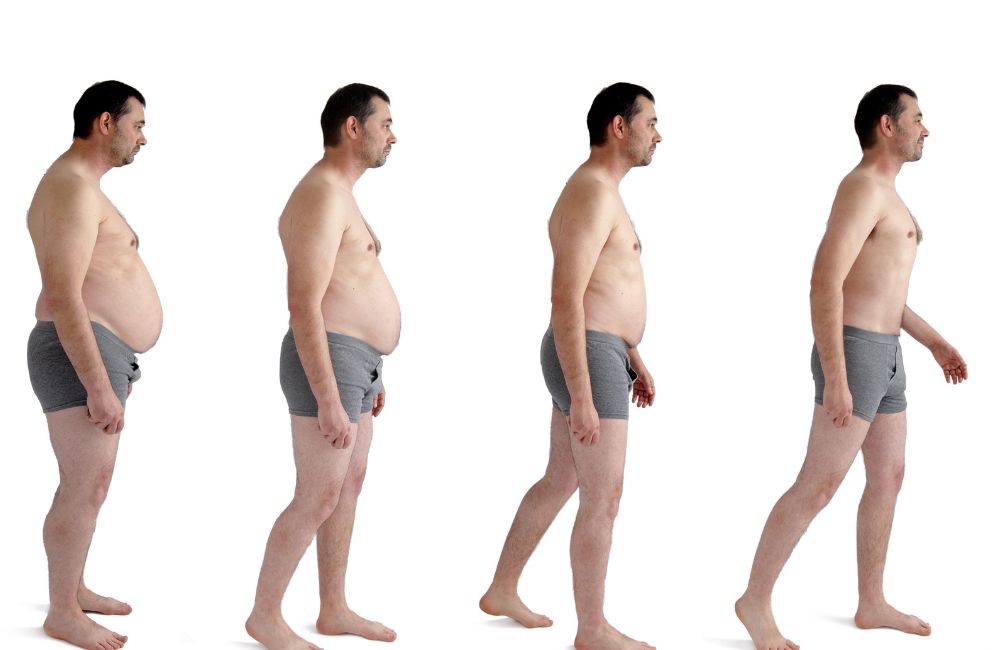
Nowadays, people are looking for newer, quicker, and more effortless ways to lose weight and get in better shape. Increasingly, those with weight loss goals are turning to intermittent fasting for the exact reasons.
Proponents of intermittent fasting claim that this diet offers a variety of health benefits and helps them to lose weight, burn fat, and simplify their lifestyles.
But what exactly can you expect from this approach to weight loss?
This article will provide an overview of intermittent fasting and discuss what you can realistically anticipate after one month of following a fasting plan.
What Is Intermittent Fasting?

Intermittent fasting is an umbrella term for a group of diet patterns that cycle between periods of fasting and eating.
Unlike other diets, fasting plans do not specify how much you should eat. Instead, they focus on when you should eat. For this reason, many people consider intermittent fasting to be more of an eating pattern rather than a traditional diet.
There are multiple ways that you can intermittent fast. Some standard intermittent fasting protocols include:
The 16:8 Method
The 16:8 diet is a popular version of fasting. It involves eating your meals and snacks during an eight-hour window while abstaining from food for the remaining 16 hours every day. Most of the time, this plan involves skipping breakfast and not eating anything after dinner.
A typical eating window on the 16:8 fast is from 12 pm to 8 pm every day. Many people find that the 16:8 routine is the simplest version of intermittent fasting, and it may be an excellent place to start for those new to fasting.
The 5:2 Method
The 5:2 method involves restricting your intake to 500-600 calories for two days of the week while following a typical eating pattern on the other five days.
The Warrior Diet: This version of intermittent fasting entails eating small amounts of fruits and vegetables throughout the day and consuming one large meal in the evening during a four-hour eating window.
Eat Stop Eat
On the eat-stop-eat plan, you fast for 24 hours one day a week. For example, you could finish your dinner at 6 pm on a Tuesday and fast until 6 pm on Wednesday- a full 24 hours.
Alternate Day Fasting
For this plan, you fast every other day of the week. Several different types of this fast exist, with some methods allowing for 500 calories during the fast days. Individuals completing a full fast every other day may experience severe hunger pains, and this method may be difficult to sustain in the long term.
What Happens to Your Body While You’re Intermittent Fasting
Fasting has been shown to impact the body in several ways.
During a fast, your hormones adjust to begin burning fat as a source of fuel. In other words, when your body is cut off from food, it will adapt to use body fat as its primary form of energy.
This essentially means that fasting can switch your metabolism into fat-burning mode.
Some of the changes that occur during fasts include:
Lower insulin levels- Insulin is a hormone that is released by the pancreas in response to carbohydrates found in food.
Its main role is to help regulate blood glucose (aka blood sugar) levels. Insulin decreases during a fast, which sends signals to your cells to start using fat for energy instead of blood sugar.
Increased human growth hormone- Human growth hormone (HGH) has been linked to greater fat burn and increases in muscle mass (2-4).
There is evidence that HGH levels increase while intermittent fasting (5, 6).
Boost in norepinephrine levels- During a fast, norepinephrine levels rise (7, 8).
Norepinephrine, also known as noradrenaline, is a hormone released by the brain that tells the body to release fatty acids from stored body fat. These free fatty acids can then be used by your cells for energy.
Can You Lose Weight With Intermittent Fasting?
There is growing research that intermittent fasting is at least as effective for weight loss as other diet plans.
The primary way that intermittent fasting helps you lose weight is by creating a calorie deficit. A calorie deficit occurs when you burn more calories in a day than you eat. All of the intermittent fasting approaches involve skipping meals and snacks to some degree, which results in fewer calories consumed over time.
Your body also adjusts hormone levels during a fast to burn more fat. As previously mentioned, when your body is cut off from the calories in food, it will start to burn body fat to meet energy needs, ultimately helping you lose weight.
One 2014 review article found that intermittent fasting resulted in a 3 to 8% reduction in weight over 3 to 24 weeks (9).
A different review study from 2011 showed that intermittent fasting resulted in a weight loss of 4 to 8% from baseline after three weeks (10).
Furthermore, the researchers noted that fasting caused less fat-free tissue loss compared to a daily calorie restriction. This means that participants who fasted lost less muscle mass than those on the traditional diet (10).
A more recent systematic review from 2020, which consisted of 27 separate studies and 944 participants, found that intermittent fasting resulted in a weight loss ranging from 0.8% to 13% of baseline weight (11).
Waist circumference, or belly fat, also decreased by 3 cm to 8 cm (or about 1 to 3 inches) among intermittent fasting participants in the studies that lasted longer than four weeks. Plus, the researchers noted that much of the weight loss from intermittent fasting was from fat loss (11).
How Many Pounds Can You Lose in One Month?
Many of you may want to know how much weight you can lose in the first few weeks on an intermittent fasting plan. After all, it is only natural to want to see the effects of your hard work in less time.
Unfortunately, there are no simple answers to this question. The amount of weight that you may lose on any diet depends on several factors, including your age, gender, genetics, starting weight, calorie intake, daily calorie deficit, physical activity, and where you are in your health journey.
Additionally, healthy habits, including sleep, nutrition, stress management, and exercise (both cardio and strength training), can affect weight change.
Ultimately, weight loss results while dieting will be different for different individuals and different bodies.
The Centers for Disease Control and Prevention (CDC) currently recommend a gradual weight loss of 1 to 2 pounds per week or about 4 to 8 pounds in one month (12).
This is because individuals who lose weight at a steady rate may be more successful at keeping the weight off in the long run. Simply because a diet promises its followers rapid weight loss, especially during the first few weeks, does not mean that the weight change will be permanent.
Which Intermittent Fasting Is Best for Weight Loss?
Every method of intermittent fasting can be an effective way to lose weight. As with all diets, the best strategy will depend on what works best for each person.
For example, you might prefer to fast only one or two days per week, since it will give you the freedom to eat normally the majority of the time. In that case, the 5:2 method or the eat stop eat repeat plan may be a good way to get started.
Or perhaps you naturally skip breakfast most mornings. If that is the case, then the 16:8 method may be a much better fit for your life, as it will allow you to eat a typical lunch and dinner.
Additionally, intermittent fasting is not for everyone, and there is plenty of other weight loss plans out there that also offer lasting results.
Ultimately, there is no right way to lose weight, and the best weight loss programs are the ones that you can maintain for the long run.
Tips for How to Succeed With Fasting
Tip 1- Try to pick an intermittent fasting weight loss plan that will set you up for long-term success
Consider your lifestyle, schedule, current eating pattern, and appetite when selecting any diet plan for losing weight. Keep in mind that the best diets are the ones that you can maintain for an extended period.
Tip 2- Drink plenty of fluids
Hydration is important during intermittent fasting and should not be limited to your eating window. Most intermittent fasting plans allow for beverages with zero calories, including water, unsweetened tea, and black coffee.
In addition to preventing dehydration, these drinks may help keep hunger pangs and food cravings at bay. Research has shown that drinking plenty of fluids may increase feelings of satiety (13), and is one way to help you feel fuller while you are on a fast.
Tip 3- Choose foods that are rich in nutrients and have fewer calories
Unlike most diets, intermittent fasting plans do not have any food rules for losing weight. However, limiting processed and junk food intake, such as sugar, soda, cookies, and the candy is still recommended.
These foods are associated with weight gain, obesity, oxidative stress, inflammation, high cholesterol levels, and greater calorie intake. They are also linked with an increased risk of certain diseases, including heart disease, high blood pressure, diabetes, and insulin resistance.
When intermittent fasting, you will still want to focus on a balanced, quality diet that is lower in total calories and includes plenty of fruits and vegetables, whole grain carbs, legumes, fish, lean meats, and protein.
Last Words
Intermittent fasting may be an effective and sustainable way to lose weight and improve overall health.
As with all diet plans, the amount of weight that you can lose with fasts depends on many factors. Keep in mind that most health experts recommend a gradual weight loss of 1 to 2 pounds per week.
You may want to speak with a registered dietitian-nutritionist before starting any diet plan including one that includes fasts. A dietitian can help you set health goals and provide guidance in selecting the weight loss program that is right for you.


